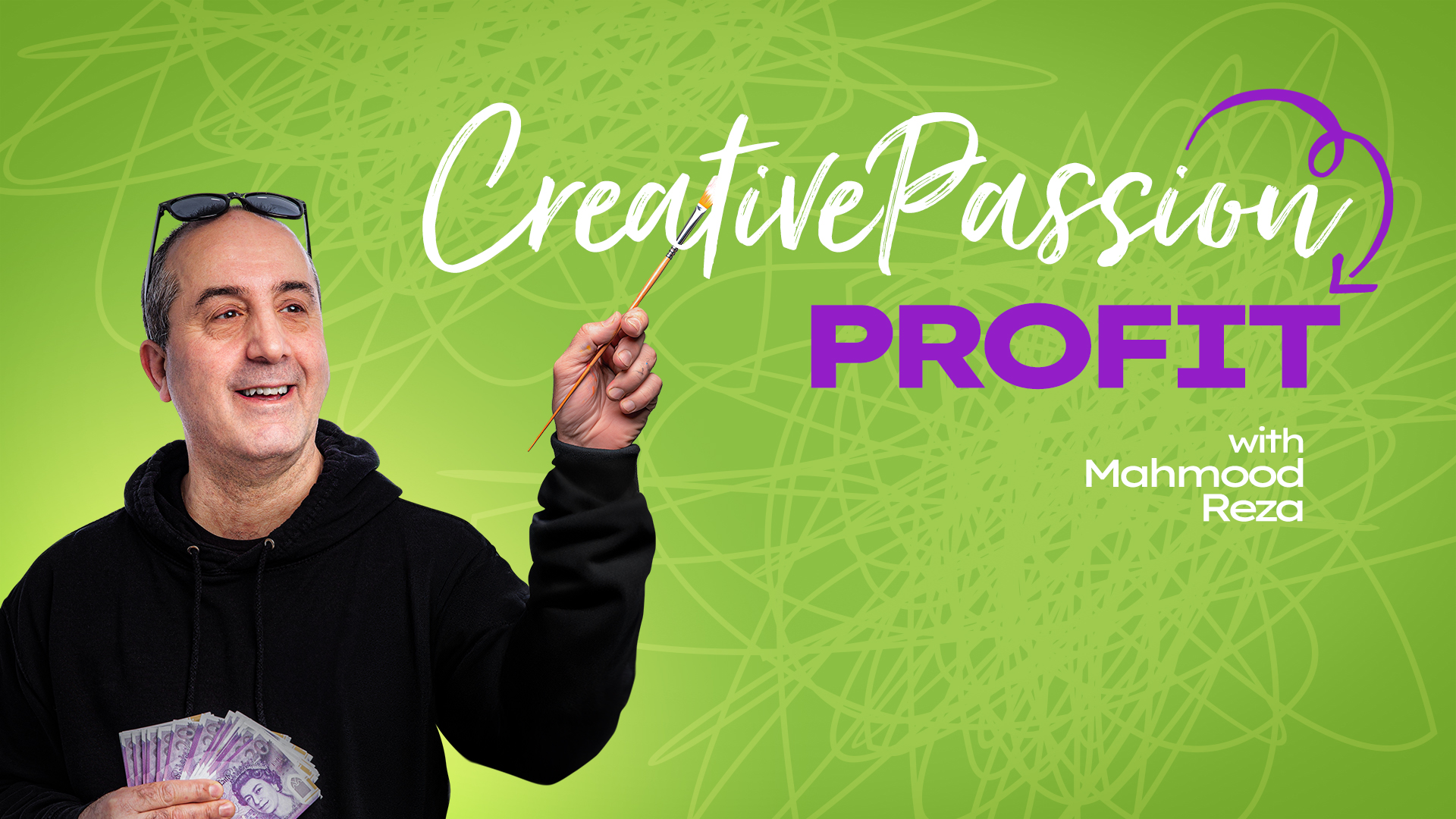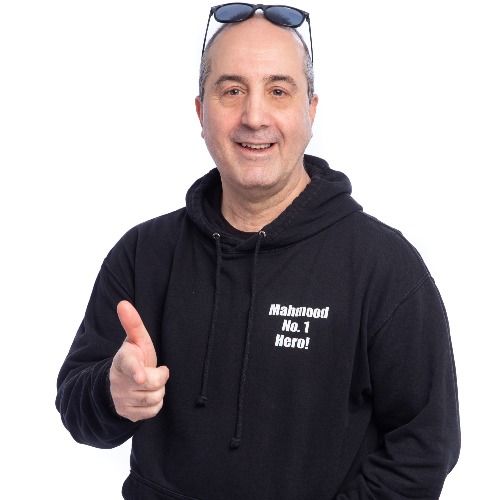Financial Boundaries for Creatives
As a creative entrepreneur, establishing financial boundaries might not be the first thing on your mind, but it's essential for the sustainability of your business.
In this episode "Financial Boundaries for Creatives," I delve into why setting financial boundaries is crucial for protecting your time, energy, and income.
We'll explore how to see yourself as an employee of your own business, and how creating separate accounts and paying yourself regularly can transform your creative pursuit into a profitable business.
Whether you're a freelancer, self-employed, or just starting, this episode can guide you towards maintaining clarity in both your personal and business finances.
You'll learn practical steps like opening a dedicated bank account for your creative income, making it easier to track your financial activity without the hassle of mixing personal funds.
After listening to this episode, you'll be better equipped to differentiate your business and personal finances, making smarter financial decisions for your creative venture.
For detailed guidance, follow this timestamped summary:
- [00:00:02] Why Financial Boundaries Matter
- [00:01:12] Seeing Yourself as an Employee
- [00:02:11] Steps for Financial Control
- [00:04:04] Tracking Income and Expenses
- [00:04:57] Paying Yourself Regularly
- [00:05:36] Final Thoughts and Encouragement
Mentioned in this episode:
Training
Training
Find out more about Budgetwhizz
Find out more about Budgetwhizz
Transcript
Establishing financial boundaries for your creative business
Speaker:is the theme of this week's From Passion to
Speaker:Profit. Why, you might ask yourself, do I need to set myself
Speaker:financial boundaries? Well, it has the impact of
Speaker:protecting your time, your energy and your income. In this
Speaker:week's episode, I'm going to be looking at setting financial boundaries, the idea of
Speaker:creating separate accounts and also paying yourself on a regular
Speaker:basis. Yes, I did say that. Paying yourself on a regular
Speaker:basis, put all these things together and that's going to help you take
Speaker:control of your creative business.
Speaker:Now, before we dive into the episode in detail, it's really important
Speaker:that you, as a freelancer, as a self employed
Speaker:individual, see yourself as the employee of your own business.
Speaker:Now, this isn't a legal framework we're talking about, but if you're operating as
Speaker:a freelancer, you're operating as an individual, a self employed person,
Speaker:then it's really important that you have in your mind a
Speaker:separation of the business. The thing that you're providing to your clients,
Speaker:your audience, the impact that you're making is one thing. You as the
Speaker:individual are effectively the employee of that business. Now that's the theme
Speaker:I'm going to explore in future episodes. But for now, see yourself as
Speaker:the employee of your own business and it makes that distinction, those
Speaker:boundaries less blurred. Now, the upshot is if you
Speaker:are constantly dipping into your personal savings because you need to cover
Speaker:your business expenses like rent home, hiring venues, buying art
Speaker:supplies, then it's going to be really problematic and difficult for you to know
Speaker:whether what you're doing is actually profitable. And profit is not a
Speaker:dirty word. It's an essential part of your business operation
Speaker:in order for you to survive, sustain, grow and keep
Speaker:delivering your why? If you don't set boundaries, your personal and
Speaker:business finances will blur and that will lead to chaos.
Speaker:When you look at your bank account, it's going to be very difficult for you
Speaker:to know if the business itself is going to lead to
Speaker:prosperity. Now, setting boundaries sounds very complicated, but it's
Speaker:not that complicated if you have the right approach to it. And here are
Speaker:three steps that I'd recommend to get you started. Number one,
Speaker:open up a dedicated bank account for your creative
Speaker:income. Now, I'm not suggesting which specific bank account you should open up,
Speaker:but if you have a bank account, some way of actually
Speaker:saying everything that goes into that account and everything that comes out is
Speaker:business related, it's easier for you to see what's going
Speaker:on at a glance. Also, if you need to make decisions, if you need
Speaker:to understand what's going on, it's going to be much easier to look
Speaker:at something that's dedicated and therefore it doesn't create confusion in
Speaker:your mind. So number one, open up that dedicated bank account
Speaker:where all your creative financial activity is going to flow
Speaker:through. Number two, track your income and expenses on a regular
Speaker:basis. Now, I'm not talking Davy Crockett type tracking, but if you can't
Speaker:say relatively easily what you're spending, what your income
Speaker:is and whether your business is actually generating a profit, then how do
Speaker:you know what you're doing is reaping benefits financially, let
Speaker:alone artistically? And number three, pay yourself a
Speaker:consistent amount. Now that might seem quite fanciful because your income might
Speaker:be quite erratic, but actually paying yourself as an employer would
Speaker:to an employee reinforces a lot of positives.
Speaker:So let's get into this. Number one, as I said, separate accounts,
Speaker:it's on non negotiable as far as I'm concerned. Every payment you receive for your
Speaker:creative work goes into that business account. And every expense
Speaker:connected to the business should ideally come out of that account as well.
Speaker:Now I know many creatives understandably want to minimize the
Speaker:outflow, minimize the costs. Modern banking is such now
Speaker:that you will be able to find an account that does that separation.
Speaker:Now it may also be a separate branch, a separate
Speaker:account of your main account, but you want to keep them separate. So
Speaker:therefore you can put your business hat on, look at that account and say this
Speaker:is what's going on. The second step we talked about was
Speaker:tracking your income and expenses. Now it doesn't need anything overtly
Speaker:expensive or fancy digital systems such as Xero, even
Speaker:a notebook, a spreadsheet will work perfectly fine. If you
Speaker:need any support and help on that, then obviously check out the show notes
Speaker:here and contact us and we can make some more detailed
Speaker:recommendations. In fact, even better, join our free
Speaker:community which is specifically for artists and creatives, and you'll find
Speaker:resources within that. The key to all this is
Speaker:consistency. Now step three is about paying yourself.
Speaker:Now if you do not remunerate yourself, if you do not pay yourself, then
Speaker:there will be some element of demotivation that creeps in at some point.
Speaker:Even if you pay yourself a modest amount, a regular amount coming
Speaker:out subject to the cash being there helps you treat your
Speaker:creative business like a professional business. And it is a
Speaker:business. The only financial activities, to my mind
Speaker:that is not a business is if you are an employee being treated
Speaker:under what's called paye. Every, every activity in my mind from
Speaker:charitable artistically is effectively a business. Now
Speaker:take the first step. Even if you just go out and open up a separate
Speaker:account, you will find that separation between your personal
Speaker:life and your business life becomes less blurred. You'll be able to
Speaker:see more easily what's going on, and you'll be able to make some good
Speaker:decisions about what's going on with your creative business as
Speaker:well. A simple change that can make a massive impact.
Speaker:Until next time, folks. Set those financial boundaries.




